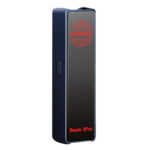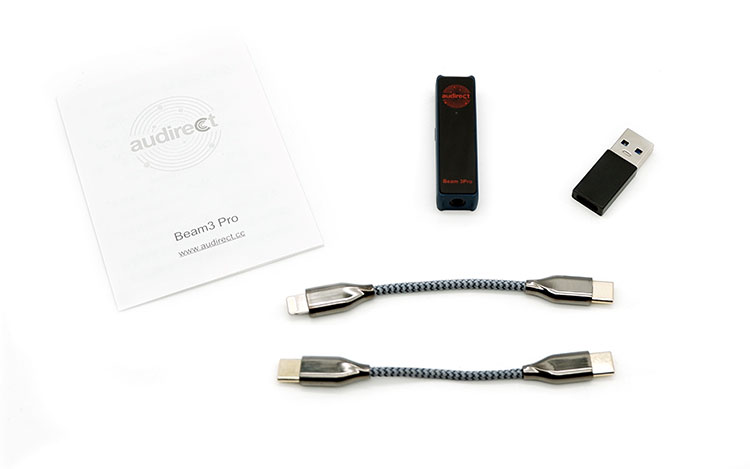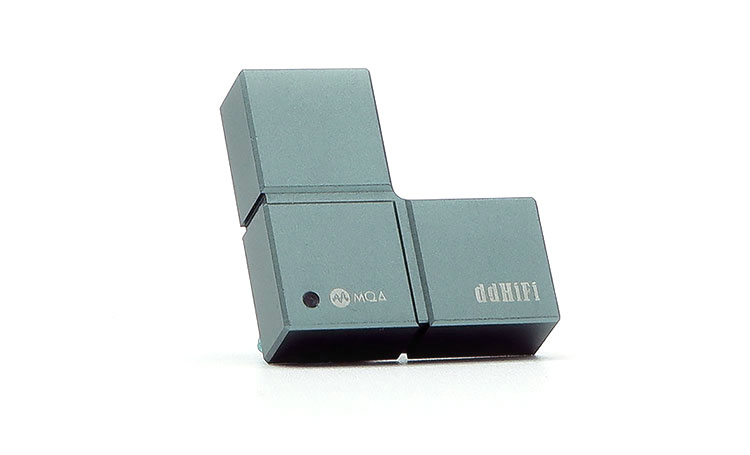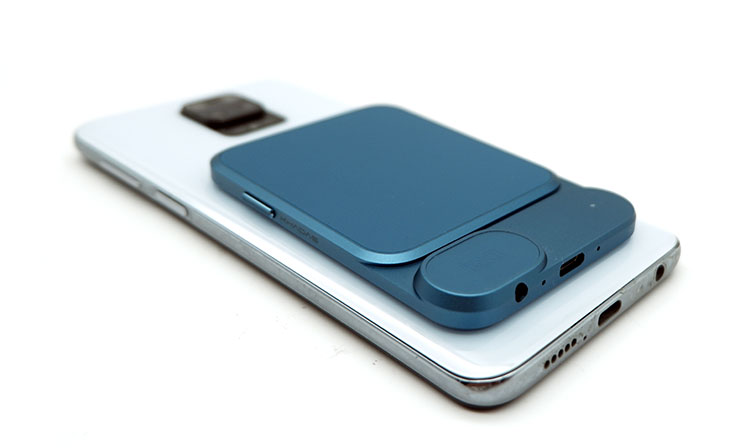Our review today covers the new Hilidac Audirect Beam 3 PRO which is an MQA and PCM 32BIT/768kHz capable portable dongle-style amp and DAC. It is priced at $149.99
Disclaimer: This was sent to us as a sample for our honest opinion. Headfonics is an independent website with no affiliate links or services. We thank the team at Shenzhen Audio and Hilidac for giving us this opportunity.
To read more about portable amplifiers & DAC products previously done on Headfonics please click here.
Note, this review follows our latest scoring guidelines which you can read up on here.
The name Hilidac comes from the words Hifi Improved Lossless Incredible DAC. This is a company that has focused on producing dongle-style amplifiers & DACs for a few years now, and they have since doubled down on investing more R&D into producing better versions when smartphones started to lose 3.5mm jacks.
Hilidac has 2 main product lines, which are the Atom and the Beam. Where the Atom is a more compact portable solution, the Beam range tends to be larger, while still being clearly a portable device. Today we’re taking a closer look at Hilidac’s latest effort in the Beam Series, the Audirect Beam 3 Pro.
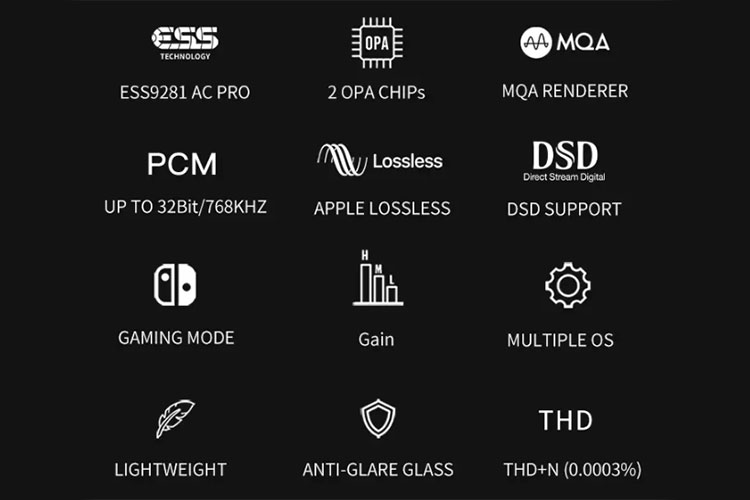
Tech Highlights
Most dongles released today have an ESS DAC at their core, and the Beam 3 PRO is no different as it sports an ES9281AC PRO DAC chip. However, this doesn’t equate to the Beam 3 PRO sounding like every other dongle out there since Hilidac doesn’t simply slap on the ES9281AC PRO USB Codec on a circuit board and call it a day.
One way of improving upon the capabilities of the ES9281AC PRO USB Codec is that instead of simply using the headphone output section on the ES9281AC PRO DAC chip, the Beam 3 PRO is equipped with a pair of OPA opamps, 1 for each channel. This allows it to have 3 gain stages that can be used to accommodate different types of loads.
Of course, being a dongle that runs one of ESS’ latest USB Codec Chips, the Hilidac is capable of decoding 32/768kHz, DSD512, and even doing a full MQA unfold.
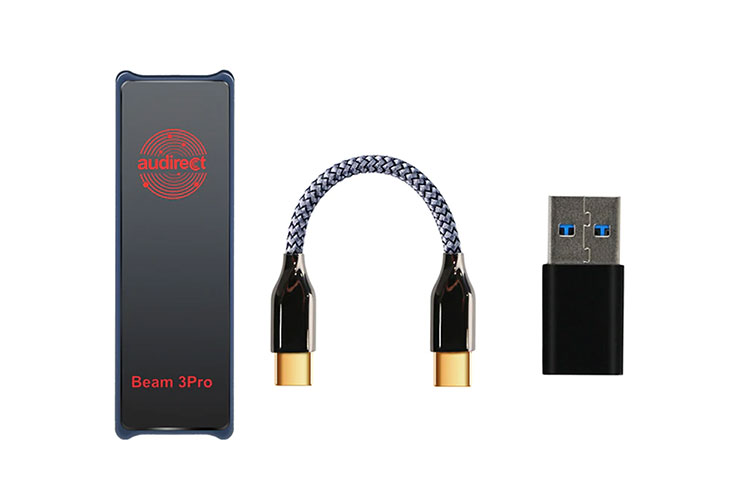
Design
Like most dongles from Hilidac, the Beam 3 PRO can be considered one of the more compact products on the market. However, it has a surprising amount of heft for its size giving me the feeling that there is a lot packed into this little DAC.
As for the chassis, the dongle is made primarily of matte-finished plastic, with blue sides and a black front and backplate.
The overall aesthetic of the Beam 3 PRO is simple, but there are some markings on the body of the dongle, such as the Audirect branding in the middle of the housing. Then there are the LEDs that are used as status indicators of the unit.
I/O
Small dongles tend to have a limited set of inputs and outputs, and the Beam 3 PRO is no exception. It’s only limited to having a standard USB C input, and a 3.5mm TRS output connection. However, this simplicity contributes a lot to the smaller form factor, so I’m not pining for more inputs or outputs either way.

Controls
As a pure dongle, the Beam 3 PRO doesn’t have any volume control buttons, instead, it has a solitary button for switching between the 3 gain levels. Beside the button, there is a small LED that shows the gain level on the amplifier, where red means high gain, yellow means medium gain, and green means low gain.
Aside from the gain indicator, the front fascia of the dongle also features an LED light right below the Audirect logo. That LED is used to indicate the different sampling rates that the Beam 3 PRO is decoding, where red is for 44.1/48kHz PCM, blue is 88-384kHZ PCM, and green is for 705-768kHz PCM.
For DoP, the LED turns yellow, and then white for DSD, and finally, it turns magenta for MQA decoding.
Packaging & Accessories
The box that the Beam 3 PRO comes in can be considered simpler than most packages that come with dongles today. It seems like the box is a generic creation where they add a bit of product-specific information as needed.
The outside of the box has a textured finish, then there’s an Audirect logo in the center of the box. On the rear, there is a sticker that shows some information about the dongle.
Inside the box, there is a foam insert for the dongle itself, and then underneath there is a manual in different languages. Then on the second layer of the box, Audirect includes a short USB-C to USB-C cable and a USB-C to USB-A converter, which ensures that the Beam3 will be compatible with both portable and desktop applications.
Also, Audirect sent over a USB-C to Apple Lightning connector to make their package truly universally compatible.
Sound Impressions
Summary
Although I wouldn’t say that the Beam 3 PRO is particularly warm, the Beam 3 PRO does have a safer tonal balance where there is a touch of bass emphasis while pulling back on the lower treble.
This results in a less offensive, but less exciting presentation. Fortunately, the Beam 3 PRO has texture and clarity in spades which allows for image delineation, solid texturing, and above-average layering.
Timbre
To appeal to a wider audience, the Beam 3 PRO has a hint of bass emphasis with a mild low-end bump. Fortunately, the lows remain controlled while having a good amount of texture, which results in maintaining an accurate timbral presentation with drums and bass guitars.
Also, the speed and control over the bass region allow the Beam 3 PRO to recreate an accurate and snappy bass region.
The midrange is more pushed back while having a good amount of texture and control. With vocalists, some euphony is allowed to shine through, but the Beam 3 PRO doesn’t artificially inject any euphony into the mix.
Despite having a warmer tilt with midrange instruments, each string on the guitar can be clearly heard complete with the crisp edginess of each string. With pianos, the warmth and resonance of each note can also be clearly heard, but there is a lack of girth with each note which would have made it sound even more natural.
To create a safer tuning, the lower treble on the Beam 3 PRO is pushed back a little while having a generally controlled treble range. This allows wind instruments to have a natural sense of timbre, but ultimately lack body and a sense of space. The more controlled treble range gives a natural sense of attack while the sense of decay can be cut short at times.
Staging & Dynamics
Although the treble region on the Beam 3 PRO can be considered extended, there isn’t much lift, which results in a relatively natural soundstage presentation. This allows images to be formed naturally within the soundstage, particularly when creating a convincing center image, where the center image is weighted and life-like.
The directional extremes of the soundstage are also properly filled in, so images are clearly formed on the extreme left and right. However, there aren’t that many sound elements formed between the extremes and the center image.
Where the accuracy of the Beam 3 PRO shines through is the way images are formed, where the images are properly layered within the soundstage. Also, the images are naturally delineated despite having smaller images within the soundscape.
Synergy
Power
One of the unique features of the Beam 3 PRO is that it has 3 gain levels, with each gain level having a different maximum voltage. The maximum power ratings on the Beam 3 PRO reach 115mW into 16Ω, 150mW into 32Ω, and 13mW into 600Ω. The gain switch simply gives the Beam 3 PRO the flexibility to have a lower gain level to accommodate different downstream equipment.
With these power numbers, powering IEMs isn’t much of a challenge for the Beam 3 Pro, easily bringing the BGVP DM8 to my maximum listening levels at 60% volume, while the Mangird MT4 only needed around 55% to reach my maximum listening levels.
Full-sized headphones are a different story though, as the Sendy Apollo needed 90% to reach my normal listening levels, while the Sennheiser HD600 needed 95% for comfortable listening levels.
Pairings
With lower power numbers, I started the Beam 3 PRO off with some IEMs, namely the FiiO FH3, which makes for an interesting combination with the Beam 3 PRO as it gives a generally more intimate presentation. It retains the safer tonal balance, but there is a lack of accuracy and texture that tends to be more prominent with other IEMs.
Moving over to the 8 BA BGVP DM8, there is a marked improvement in imaging accuracy and delineation. And while drum timbre is very natural, the bass is a bit too pushed back for my tastes when the DM8 is paired with the Beam 3 Pro.
I would say that a better tonal balance is achieved when the Mangird MT4 is paired with the Beam 3 Pro. This results in a good amount of texture and image delineation while having a respectably wide soundstage presentation. The only thing that I find lacking with this combination is that last bit of bite and shimmer.
Moving over to full-sized headphones, I ran the Sendy Audio Apollo, which ended up requiring me to crank up the volume to 90%. However, even at 90%, there is a lack of control in the bass region, while the rest of the frequency spectrum remains coherent and controlled. Imaging isn’t particularly wide though.
A full-sized dynamic driver like the Sennheiser HD600 proved to be a more synergistic pairing with the Beam 3 Pro. This pairing retained the magical euphonic midrange of the HD600 while allowing some bass weight and attack to shine through.
Also, textures throughout the frequency spectrum remain easily discernable, so details such as the vocal texture or the size of drum cavities easily come to the fore.
Select Comparisons
ddHiFi TC35 PRO
$99
Technical
Both of these dongles are equipped with the ESS ES9281 Pro DAC chipset, which seems to be a great foundation for making a dongle that can be competitive in the market these days.
However, the lower price point of the TC35 PRO doesn’t automatically translate to it automatically being a batter value. Instead, it simply means that the 2 dongles share the same DAC chip.
Having the same DAC also translates to the two dongles offering the same decoding capabilities, topping out at 32bBIt/768kHZ, DSD512, and full MQA decoding. Both dongles also have a headphone output section, but the one on the TC35 PRO has about half the rated power at 62mW into 32Ω.
Design
With the TC35 PRO coming in different forms, the form factor can be a bit different between the 2 devices depending on the design of the TC35 PRO that is chosen. The sample that we have in particular is the Tetris version of the TC35 Pro, with a more chassis form factor, instead of the classical straight-line used by most companies.
Instead of being made of plastic, the TC35 PRO is made with an aluminum chassis. But both dongles also have a detachable USB-C cable, and a solitary 3.5mm TRS connector. Both dongles also have an LED that indicates the sample rate being run by the DAC, however, the TC35 PRO doesn’t have a gain switch and by extension, a gain LED indicator.
Performance
While I would consider both dongles to have relatively safe tonal balance, the TC35 PRO tends to double down on the safety levels. This results in the TC35 having a comparatively warmer overall presentation which comes at the cost of some edginess with the treble presentation, leading to cymbals lacking bite.
While the vocal presentation on the TC35 PRO is more forward, there is a perceived step back in terms of vocal texture and body. Midrange instruments have a similarly forward but glossed-over presentation. While bass quantity is about equal on both dongles, the TC35 PRO has a more rounded presentation while having a less accurate sense of attack and decay.
The soundstage presentation is similar for both in terms of overall width and breadth. However, the TC35 tends to blur images together more often, despite the images being about the same size on both dongles.
Khadas Tea
$199
Technical
While the Tea also uses the ESS 9281 PRO USB codec chip, what’s interesting is that the decoding capabilities of the Tea are only limited to 32/384kHz, DSD256 while still being capable of a full MQA unfold. While the Tea still has a standard USB input, the Tea also has an option to be used as a Bluetooth DAC, since it has an internal battery.
The Tea doesn’t have any gain settings, both units have similarly rated power outputs, with the Tea having a rated output of 165mW into 32Ω. This is interesting to see, as the Tea doesn’t boast of any external opamps for the headphone output section, but there might still be some for the headphone output section.
Design
Despite having strikingly similar internal components, the Tea looks very different since it was designed to be stacked behind your phone. Consequently, it has a thinner form factor, while being much wider, allowing it to be subtly tucked away behind your phone with the use of a magnet.
Both units have an LED that serves as an indicator light, but the one on the Tea also serves as a status indicator instead of being limited to being a sample rate indicator.
With the tea being a larger device, it also allows for more buttons, which gives the Tea a power button, and a multi-purpose volume rocker that allows different functions such as volume +/-, next track/previous track, and battery charge mode.
Performance
While it isn’t specifically mentioned in the manual, I would figure that the output stage of the 2 units might have similarities because the detail retrieval capabilities of the 2 DACs are similar. They even have a similar tonal balance, with the Tea having a bit less bass while having a more natural and believable treble timbral presentation.
Overall, the vocal presentation is similarly textured on both units, however, the Tea’s vocals, as well as midrange instruments, tend to have a more forward presentation.
This leads to the staging presentation having a comparatively more intimate feel. Interestingly, imaging ends up being less defined as they are more delineated while maintaining a similar level of positional accuracy.
Our Verdict
A lot of manufacturers try to make products that do fancy things which then becomes the defining feature of their device. However, Audirect decided to go against this kind of thinking with the Beam 3 Pro.
Instead, they created a relatively simple product done well, with the small and sturdy form factor and the simplicity that allows it to be versatile enough to be used in portable and desktop environments.
While the Beam 3 PRO uses a DAC chip that is used by many dongle manufacturers these days, Hilidac has taken the ES9281 PRO chip and added its own unique flair to it. Creating a safer presentation that lends itself to appealing to a wider audience, whilst having a superb execution that features clean lines and an engaging character.
Hilidac Audirect Beam 3 PRO Specifications
- DAC Chip ES9281AC PRO
- Op-Amp 2pcs
- Output 5mm SE
- Frequency Response 032dB @ 20Hz-40kHz
- Output Voltage 427mV rms (Low Gain)
- 65mW rms (Mid Gain)
- 88mV rms (Hi Gain)
- Max Power 115mW @ 16Ω
- 150mW @ 32Ω
- 13mW @ 600Ω
- SNR -118dB
- THD+N 0003%
- Sample Rate up to 32bit/768kHz PCM
- DSD512
- Net Weight 23g
- Size 53mm x 15mm x 10mm


